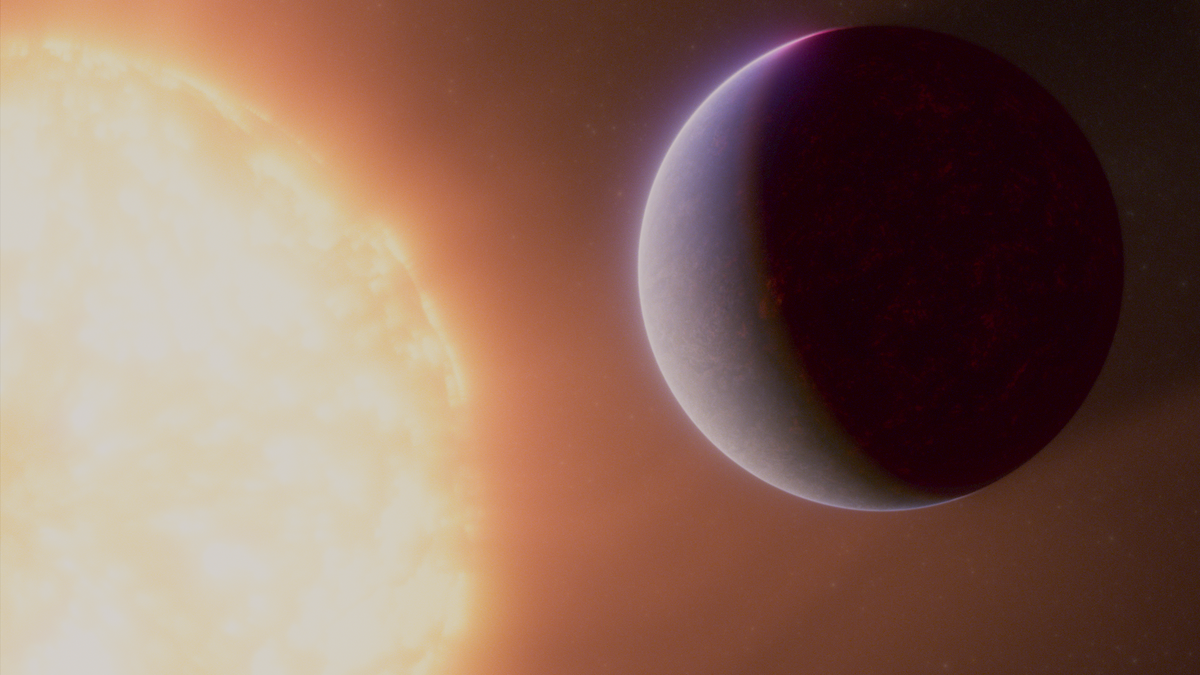In the thousands of years that people have been arguing about whether life exists elsewhere in the universe, one thing has been constant: No one really has had a clue. But not anymore. That’s because we finally know exactly where to look for aliens.
Thanks to spectacular advances in science, we’ve identified many stars that have planets in the habitable zone where life can form. We are learning which of those planets are Earthlike enough to be worth pointing our telescopes at. We have giant telescopes equipped with spectrographs that can analyze light from distant stars, and powerful computers to simulate far-flung worlds. If we want to find aliens, we don’t need them to announce their presence to the cosmos. Instead, like detectives on a stakeout, we can just hang out with our doughnuts and cold coffee, watching and waiting.
One form of evidence that astronomers are seeking on their great cosmic stakeout is “biosignatures”—features in a planet’s atmosphere that can come only from life. Scientists have learned from studying our own planet’s history that Earth’s life has been a major player in our world’s evolution for billions of years. Life hijacked the Earth, transforming, among other things, the very air around us. Earth’s atmosphere has chemicals in it that would not exist on a lifeless world. These include oxygen, ozone, and dimethyl sulfide (a compound that gets released into the air by marine plankton). It stands to reason that the same thing would happen on an alien planet hosting alien life, and now we have a way to check.
By analyzing starlight that has traversed an exoplanet’s atmosphere (if it has one), astronomers sitting on Earth can nail down what that atmosphere is made of. The key is to check which wavelengths of light the atmosphere has absorbed. Each pattern of missing wavelengths is like a fingerprint that corresponds to a particular element or molecule: If there are absorption lines of water in a star’s spectrum, then there’s water vapor in the planet’s atmosphere. Same for carbon dioxide. That means we can see what’s floating around in the atmospheres of planets that may never, ever be visited by a human. We Homo sapiens, basically just a bunch of hairless monkeys, have figured out how to probe distant alien atmospheres.
That’s not to say that we’ll never find a “false positive” biosignature on a planet that appears to have life but doesn’t actually—the universe is a big place, and sometimes weird things happen. On Earth, atmospheric oxygen comes from photosynthetic organisms and their metabolic shenanigans. But on planets that orbit very close to red-dwarf stars, water-vapor atoms (H2O) high in the planet’s atmosphere can get punched apart by incoming starlight and leave the world with oxygen-rich air, even if the planet is utterly devoid of life.
Astronomers will need to be wary, which means the project will take time. But the key point of biosignature science is that life’s not some frail little bunny hiding in the shadows of its big bad planet. Instead, it’s got muscle. Life has the power to completely reshape a world, and we’re going to use that power to find alien versions of it on other worlds in the galaxy.
Biosignatures may be the key to finding alien life, but they won’t point you to alien civilizations. For that, you need a different strategy. Once some smart alien civilization begins harvesting enough energy and putting it to work—the very project of civilization-building—it will have left an indelible imprint on its planet. The surface can look different. The atmosphere can have different compounds in it. The space around it might be populated with machines, such as satellites. All of this innovation will create “technosignatures”—a term coined by the astronomer Jill Tarter that refers to signs of living things and their technology—that can be seen across interstellar distances.
On Earth, you don’t have to look very far to find technosignatures. Right now, as you read these words, invisible electromagnetic waves—the wireless internet—are passing through your body. Wireless technologies surround the Earth in a shimmering sphere. Human technology moves more nitrogen and phosphorus around the planet than natural forces do. Our livestock weigh more than all of the wild mammals on Earth. And, of course, we’ve changed the planet’s atmospheric chemistry and its climate.
When the search for extraterrestrial intelligence (SETI) was first getting started, most people assumed that we earthlings would find aliens by detecting a purposeful message (via a radio beacon) they’d sent out from a distant star. But technosignatures represent an expansion of that original SETI idea. Like biosignatures, the technosignatures that scientists can now search for just happen. They are unintentional imprints on a planet: city lights, reflections from solar panels, and orbiting megastructures. Civilizations create them regardless of whether or not they want to send out calling cards, simply by going about their civilization-building business.
Over the past few years, the study of technosignatures has entered a new era. In 2020, my colleagues and I were awarded NASA’s first-ever research grant to study atmospheric technosignatures. Our primary goal is to develop a library of possible technosignatures, because you can’t find aliens if you don’t know what you’re looking for. We also want to articulate the ways that any civilization, anywhere, might evolve, and what they might do to their planet. Luckily, the history of humans and Earth gives us one likely answer to the latter question: pollute them.
As strange as it might seem, looking for pollution in the atmospheres of distant worlds may be the fastest way to find a distant civilization. As the stuff your civilization makes becomes more advanced, the less that stuff looks like nature. If some of that advanced, unnatural stuff can be seen from 100 light-years away, then boom!—you have a technosignature.
Maybe that sounds too abstract. Let’s bring the discussion literally down to Earth. Chlorofluorocarbons (CFCs) are a class of compounds that were invented by chemists back in the 1920s. Invent is the key word here, because CFCs don’t occur naturally. CFCs have remarkable properties that make them perfect for industrial applications: Their response to heat makes them great for air conditioners. Their reaction to pressure makes them ideal in spray cans. Thus, millions of tons of CFCs have found their way into factories, offices, and homes around the world. Some of this gas has then ended up in the atmosphere. Eventually, scientists discovered that CFCs were eating Earth’s ozone layer. Oops.
This tale of industry, air, and chemistry shows us two things that are really important when it comes to hunting aliens. First, chemicals such as CFCs exist only because of technology. Second, an industrial civilization can pump huge quantities of those chemicals into their planet’s atmosphere either on purpose or by mistake. Some of the chemicals a civilization puts into the atmosphere might be detectable across space. I know this for a fact because it was one of the first results to come from our NASA technosignature research group.
Recently, our team built a mathematical model of an Earthlike planet orbiting a star 40 light-years away. Then we put the same levels of CFCs in its atmosphere that we have in ours right now. Finally, we “observed” that exoplanet with a mathematical representation of the James Webb Space Telescope. Our results showed that, given some assumptions, using the JWST for just a few weeks was enough to detect CFCs in our simulated inhabited alien planet. If this had been a real planet, we would have found really strong evidence for the existence of an alien civilization. This doesn’t tell us there are industrial chemicals in any exoplanets’ atmosphere, but it does tell us that if there were and they were at the right levels, then we could find them.
Chemicals in an atmosphere are not the only way distant planets might reveal that they’re hosting a civilization. Check out a picture of Earth at night, and you’ll see cities and the roads connecting them lit up like luminous spiderwebs. And artificial lighting sources like the sodium lamps we use today produce strong spectral imprints that could be seen from an exoplanet. In 2021, the astronomer Thomas Beatty showed how these technosignatures could be detected if the planet in question was well-lit enough. Using telescopes that are being planned right now, we’ll have the capacity to see planets and their technosignatures with greater accuracy—and to maybe even discover world-spanning cities like Coruscant from Star Wars or Trantor from Isaac Asimov’s Foundation series.
Searching for these signatures of extraterrestrial life is something researchers can do, and are doing, right now with the James Webb telescope. But JWST was not designed with life detection as its main goal. The next generation of advanced telescopes, including NASA’s Habitable Worlds Observatory, the successor to the JWST scheduled to launch in 2040 or so, will be much better tuned to the task. Other ground-based telescopes that are currently being designed will have mirrors three times bigger than today’s telescopes. With these beasts, we’ll step even further into the uncharted territory of technosignature hunting.
We will have to be ready for pitfalls and challenges as humanity begins this search for extraterrestrial life in earnest. But overcoming pitfalls and challenges is what gets scientists up in the morning. We’ll work them out. The challenges just mean we’re playing the long game. The search for aliens is a project whose progress is probably going to be measured in decades. But that’s okay. A few decades of being careful and clever is nothing compared with the thousands of years it took to get us where we are today, standing on the threshold of discovery, about to step across.
This article has been adapted from Adam Frank’s forthcoming book, The Little Book of Aliens.
When you buy a book using a link on this page, we receive a commission. Thank you for supporting The Atlantic.

Dr. Sarah Adams is a scientist and science communicator who makes complex topics accessible to all. Her articles explore breakthroughs in various scientific disciplines, from space exploration to cutting-edge research.




:no_upscale()/cdn.vox-cdn.com/uploads/chorus_image/image/73334884/GoldsberryNBAHeliocentricStars_AP_Ringer.0.jpg)


